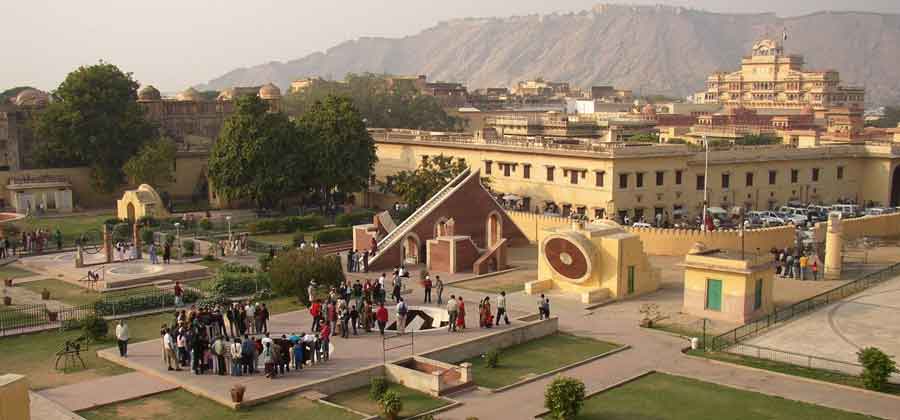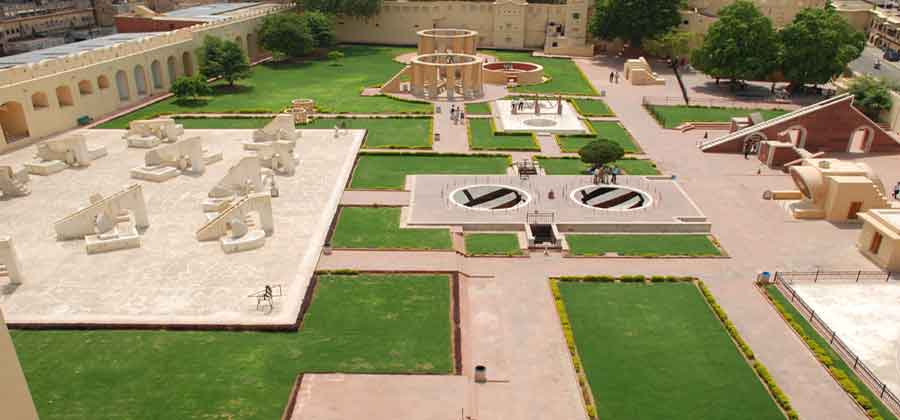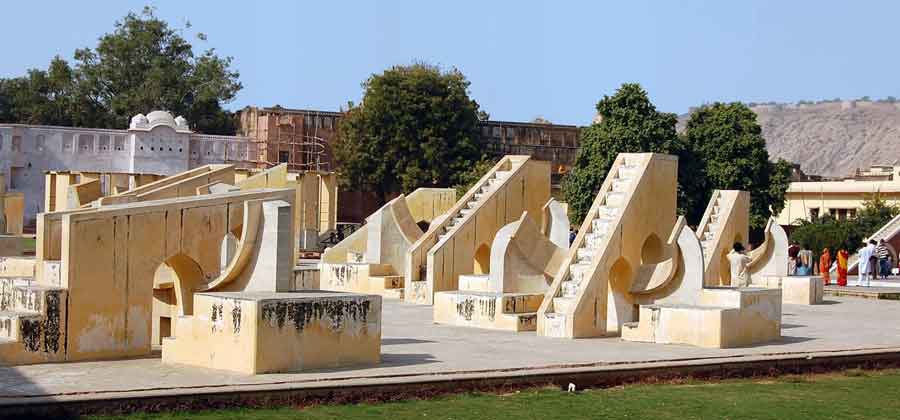When it comes to the astounding wonders of the Pink City, words somehow always feel short. Be it the magnificence of Amber Fort or the splendor of Hawa Mahal, it is difficult to even for the best of bloggers to pen down the experience of exploring it and do justice with the beauty it beckons.
Well, for this post we are also trying to “put into words”, an astronomical architectural marvel of the city known by the name “JANTAR MANTAR”.
This astronomical observatory was commissioned by none other than the founder of the Pink City, Sawai Jai Singh II in 1734. There are a total of five astronomical observatories in India and Jaipur is bestowed with the largest of them. A significant part of your Jaipur tour itinerary, this wonder is also listed amongst the World Heritage Site by UNESCO. So let’s get to know about this marvel in detail before you plan a visit to it with Rajasthan Tour Packages:
History of Jantar Mantar

The observatory is nestled in the heart of the city and is amongst the largest astronomical observatories in the world. Beckoned with 19 stone sculptures that were constructed to calculate the time and movement of the planetary bodies, this astronomical architectural wonder is a fascinating place and a must-visit.
Maharaja Sawai Jai Singh II was the founder of this astronomical observatory. Along with a pioneer of politics, his interest in physics, astronomy, and mathematics has led him to master these disciplines as well. Emperor Muhammad Shah assigned him to look into Islamic Zij Table to rectify the astronomical calculation in it. He gathered and studied the astronomical data from different and distant lands including Persia and Europe for the same. His study and extensive research led him to construct the instruments out of stone to calculate the time and the position of extraterrestrial bodies.
He built 5 observatories in different cities of the country – Jaipur, Ujjain, Mathura, Varanasi, and Delhi. The astronomical instruments of Jaipur are considered to be more competent in giving accurate results to that of others.
Major Attractions of Jantar Mantar

The astronomical observatory comprises of 19 instruments which are built of stone. Portrayed in interesting geometric shapes, the primary intent behind their construction was to determine the position of celestial bodies and to calculate time.
Vrihat Samrat is one of the most popular attractions of this observatory. This 27 m long sundial is the longest in the world. Other than this there is Laghu Samrat Yantra, which is also a sundial smaller in size, Ram Yantra, which was built in order to calculate sun and other planetary bodies’ elevation along with azimuth, Chakra Yantra, Jaya Prakash Yantra, Digmasa which helps in time prediction of sunrise and sunset, Kranti Virtya and more.
Best time to visit Jantar Mantar

If you really want to understand the interpretation process of these astronomical stone sculptures, it is suggested to visit Jantar Mantar during the midday owing to the fact the Sun is vertically above in the sky which makes it easy to comprehend. It usually takes 45 minutes to explore Jantar Mantar. The observatory is open throughout the week from 9:00 AM to 4:30 PM.
So, if you have an affinity for astronomy, then Jantar Mantar is a must-visit while you’re on your Rajasthan Trip. And if you astronomy doesn’t interest you, visit the place to drool over the architectural intricacy of that period. So why just limit your exploration to cultural heritage sites when you can add fun and new prospect of science in it?


